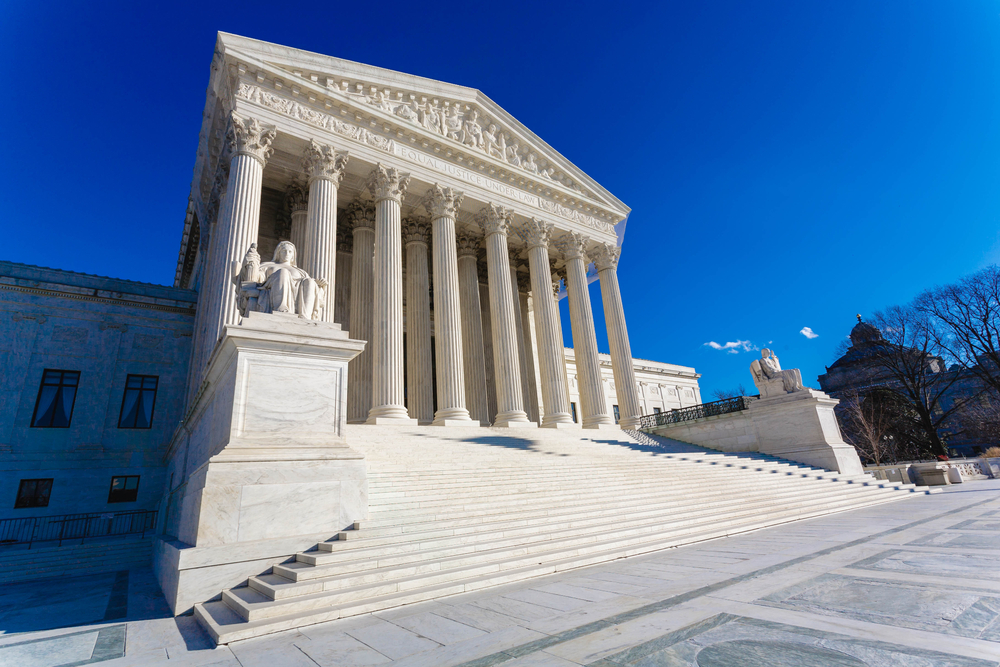On January 7, the U.S. Supreme Court heard oral arguments concerning the COVID-19 vaccine-or-test emergency temporary standard (ETS) issued in November by the Occupational Safety and Health Administration (OSHA). Petitioners, which include business groups and several states, want a federal injunction to block OSHA from implementing and enforcing the emergency rule.
OSHA earlier announced plans to issue citations for noncompliance with requirements of the ETS such as face coverings for unvaccinated employees beginning January 10 and to begin issuing citations for noncompliance with the standard’s testing requirements February 9.
“The agency has announced that for employers who are acting in good faith, it is not going to enforce any of the provisions of this ETS until January 10,” Solicitor General Elizabeth B. Prelogar told the court. “[A]nd what that means as a practical matter is that employers need to be adopting their policies, they need to be ascertaining the vaccination status of their employees, and as of January 10, they need to be requiring masking for any employees who remain unvaccinated.”
The Supreme Court heard arguments in Nat. Fed’n of Indep. Bus. v. Dept. of Labor and Ohio v. Dept. of Labor, challenging whether OSHA had overstepped its emergency rulemaking authority under the Occupational Safety and Health (OSH) Act when it issued an ETS November 5, 2021, requiring employers with 100 or more employees to implement a program of COVID-19 vaccination or regular testing and face coverings to protect unvaccinated workers.
During Friday’s oral arguments, Chief Justice John G. Roberts questioned whether Congress should have weighed in on federal vaccination and testing requirements.
Prelogar responded that Congress had weighed in with its passage in 1970 of the OSH Act.
Roberts also asked whether states should have primary responsibility for vaccination and other infection controls. Justice Neil Gorsuch also questioned whether decisions about vaccination requirements belonged with Congress and the states rather than a federal regulatory agency.
“Congress had a year to act on the question of vaccine mandates already,” Gorsuch said. “As the Chief Justice points out, it appears that the federal government is going agency-by-agency as a work-around to its inability to get Congress to act.”
When the U.S. Court of Appeals for the 5th Circuit issued a judicial stay of the ETS, the three-judge panel suggested that the White House “pored over the U.S. Code in search of authority, or a ‘work-around,’ for imposing a national vaccine mandate. The vehicle it landed on was an OSHA ETS.” The 6th Circuit Appeals Court later lifted that stay.
Gorsuch also suggested that COVID-19 is different from the hazards OSHA typically regulates.
“Traditionally, OSHA has had rules that affect workplace hazards that are unique to the workplace and don’t involve hazards that affect individuals 24 hours a day,” Gorsuch continued.
Ohio Solicitor General Benjamin M. Flowers also challenged the Department of Labor and OSHA’s characterization of COVID-19 as a workplace danger.
“[T]hey say the reason there’s a risk in every workplace is you interact, you come into contact with people at the workplace,” Flowers told the court.
“When you define the risk that broadly, that is not something that’s arising out of the workplace,” Flowers continued. “That’s a risk we face when we wake up, when we’re with our families, when we stop to get coffee on the way to work, at work, when we go to lunch, and in the evening if we go to a sporting event or a concert.”

